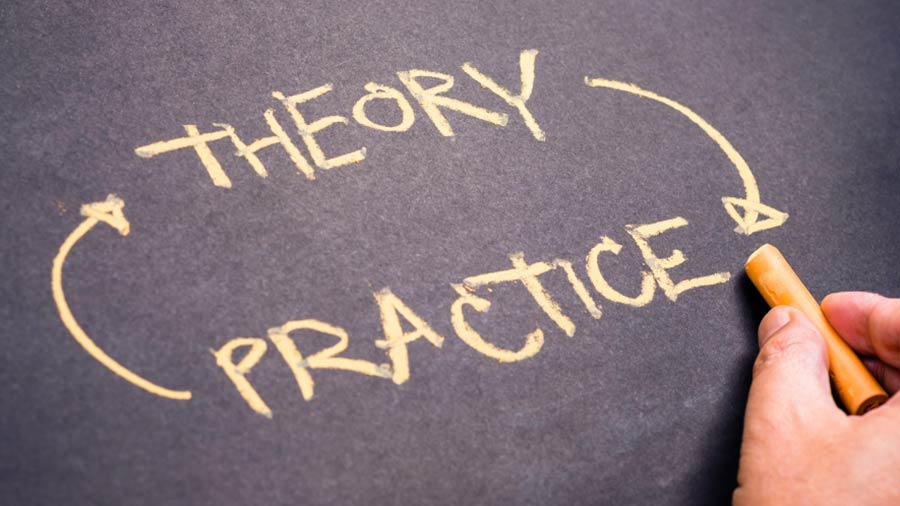Music theory is often referred to as the building blocks of music. It provides the foundation for understanding and creating melodies, harmonies, and rhythms. While music theory is a universal concept, some musicians may wonder how it applies to different instruments. This article will explore the broader aspects of music theory and how they can be used in various devices, such as the guitar, bass guitar, keyboard, piano, and ukulele. Whether you are a beginner or an experienced musician, understanding music theory can significantly enhance your skills and musicality.
Understanding the Concept of Music Theory
Music theory encompasses various elements, including notes, chords, transposing, rhythm, and cadence. These fundamental concepts apply to all instruments, regardless of their unique characteristics and playing techniques. While individual agents may have specific plans, music theory focuses on the structure and organization of music.
Music Theory and Guitar
Guitar players often encounter aspects of music theory that are similar in concept to instrument technique. Learning the chords is an essential part of playing the guitar, and these chords are the same as those used in piano or other instruments. However, guitar players may structure chords differently due to the instrument's six strings instead of the piano's 88 keys.
Inverting chords is a concept in music theory that can be particularly helpful for guitar players. Instead of playing a chord like C Major as C-E-G, a guitar player may need to play it as E-G-C to simplify hand movement while transitioning between chords. This technique allows for smoother chord progressions and facilitates playing complex rhythms.
Music Theory and Bass Guitar
Like the guitar, the bass guitar relies on chords and structures. Understanding chord progressions and pitch relations can significantly enhance a bass guitarist's skills. Recognizing and playing chords accurately enables bass players to create cohesive and harmonically rich basslines.
Furthermore, learning music theory can help bass guitarists improve their ear training and improvisational abilities. Recognizing chord changes and understanding how different chords work together allows for more creative and expressive playing. This is particularly important for bass players in jazz performances, where improvisation plays a significant role.
Music Theory and Keyboard/Piano
The keyboard or piano visually represents music theory concepts due to its layout of keys. Learning music theory on the keyboard or piano can benefit musicians of all levels. It allows a deeper understanding of note names, scales, key signatures, and chord structures.
Playing the piano also helps develop a strong sense of timing and rhythm. Learning note values and subdivisions in different time signatures enhances a pianist's ability to play complex rhythms accurately. Additionally, keyboard players can explore chord voicings and inversions, expanding their harmonic vocabulary and overall musicality.
Music Theory and Ukulele
The ukulele, a popular instrument known for its unique sound and portability, can also benefit from a solid foundation in music theory. The ukulele shares similarities with the guitar regarding chord structures, making it easier for guitar players to transition to the ukulele. Understanding how chords are formed and their relationships enables ukulele players to play various songs. Learning music theory on the ukulele also opens opportunities for exploring different strumming patterns, melodic lines, and chord progressions. It provides a framework for the perfect improvisation and composition, allowing ukulele players to express their musical ideas more effectively.
The Importance of Key Signatures and Scales
Key signatures and scales are fundamental concepts in music theory that apply to all instruments. Key signatures determine the tonal centre of a piece of music, while scales provide the foundation for melody and harmony. Understanding and recognizing different key signatures and scales is crucial for musicians to play in tune and navigate musical compositions.
Key signatures are represented by sharps or flats at the beginning of a piece of music, indicating the key in which it is written. By understanding key signatures, musicians can quickly identify the sharp or flatted notes throughout the composition. This knowledge allows for more accurate and expressive playing. Scales, however, provide a collection of notes arranged in a specific order. They form the basis of melodies, harmonies, and improvisation. Learning scales in different keys and practising them on your instrument improves finger dexterity, ear training, and overall musical fluency.
Taking Lessons and Incorporating Music Theory
Whether you play the guitar, bass guitar, keyboard, piano, or ukulele, taking music lessons is a valuable way to incorporate music theory into your practice routine. A qualified music teacher can guide you through the essential elements of music theory and help you apply them to your instrument of choice.
You can learn how to read sheet music, understand rhythm notation, and explore chord progressions during music lessons. Your teacher can also guide you on proper technique, fingering, and interpretation. Combining theory and practical application, you will become a well-rounded musician with a deeper understanding of music.
The Role of Music Theory in Jazz
Jazz music places a strong emphasis on improvisation and harmonic complexity. Understanding music theory is crucial for jazz musicians to navigate chord changes and play engaging solos. Jazz compositions often include chord symbols or alterations, indicating the underlying harmonies that support improvisation.
In jazz performances, musicians rely on their knowledge of chord structures, scales, and chord progressions to create melodic lines that complement the rhythm section. By studying music theory, particularly in jazz, musicians can develop their ear for harmony, enhance their improvisational skills, and create unique musical expressions.
Enhancing Rhythm and Timing Skills
Rhythm is a fundamental aspect of music theory and applies to all instruments. A strong sense of rhythm and timing is essential for musicians to play together in an group or band. Practising rhythm exercises and subdivisions improves your ability to play complex rhythms accurately and confidently.
Understanding note values, time signatures, and subdivisions allows you to interpret musical notation more effectively. You can perform with greater precision and musicality by internalizing different rhythms and their corresponding durations. Regular rhythm practice strengthens your sense of timing and lays a solid foundation for musical collaboration.
Exploring Advanced Concepts in Music Theory
While it is essential to grasp the fundamental concepts of music theory, there are more advanced topics that you may choose to explore as you progress as a musician. These topics include form and analysis, figured bass, and counterpoint. However, unless you plan to pursue music at a higher academic level or specialize in specific genres, such as classical composition, these advanced topics may not be necessary for your musical journey.
For most musicians, focusing on the primary areas of music theory, such as note rhythms, subdivision, and chord structure, will provide a strong foundation for musical growth. As you continue to learn and apply these concepts, you will unlock new possibilities for creativity and expression on your chosen instrument.
The Interconnectedness of Music Theory
It is essential to recognize that different aspects of music theory are interconnected. Learning one concept often leads to a deeper understanding of another. For example, learning note names leads to reading different clefs, which expands your ability to read and interpret sheet music. Similarly, understanding subdivisions in simple time signatures prepares you for more complex time signatures.
As you dive deeper into music theory, you will discover how each element folds into another, creating a comprehensive understanding of how music works. Enjoy the learning process and allow yourself to explore the vast world of music theory. By doing so, you will enhance your musical abilities and become a more well-rounded and versatile musician.
Music theory is a universal & easy concept that applies to all instruments. Whether you play the guitar, bass guitar, keyboard, piano, or ukulele, understanding music theory is essential for becoming a better musician. By familiarizing yourself with key signatures, scales, chords, and rhythm, you will gain a deeper appreciation for the structure and organization of music.
Taking lessons and incorporating music theory into your practice routine is highly beneficial, allowing you to apply theoretical knowledge to your instrument of choice. Additionally, exploring advanced concepts in music theory can open up new creative possibilities and deepen your understanding of music. Remember that music theory is interconnected, and as you continue to learn and grow as a musician, each piece of knowledge will contribute to your musical skill.
Up Next: The Future of Musical Instruments












